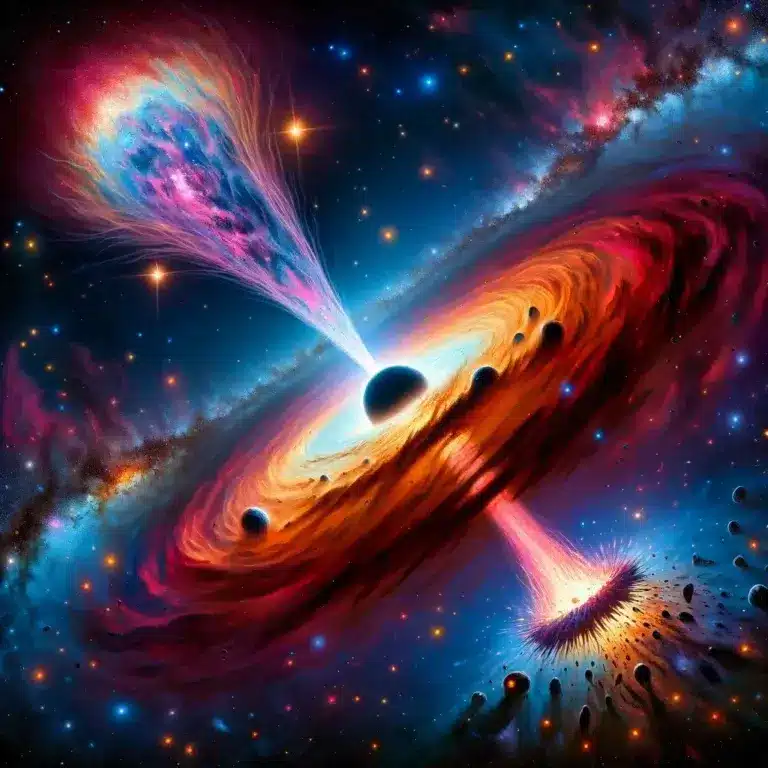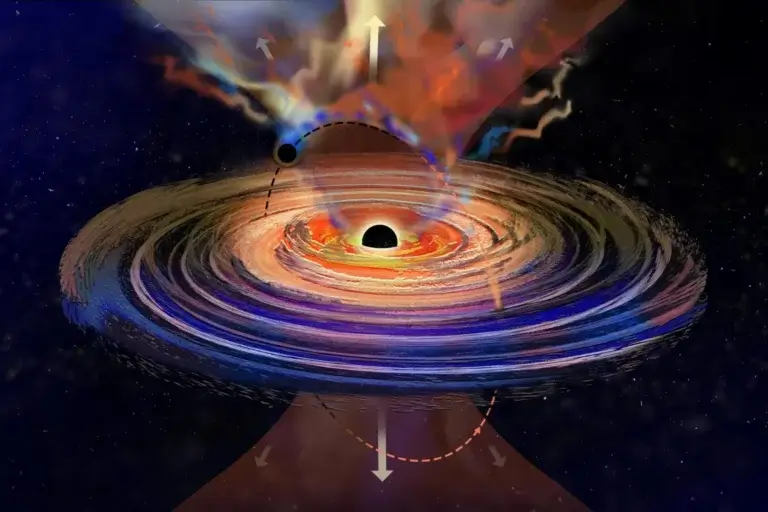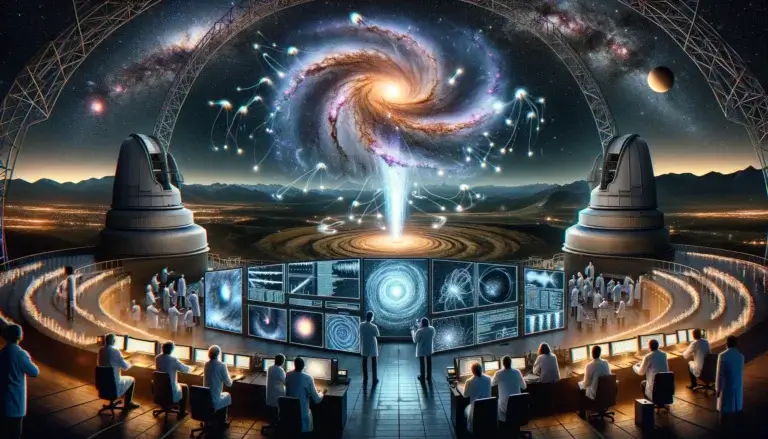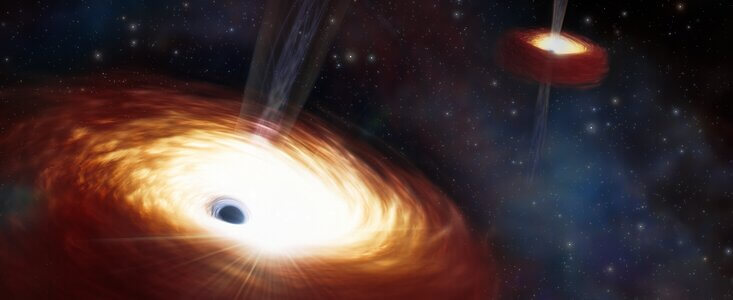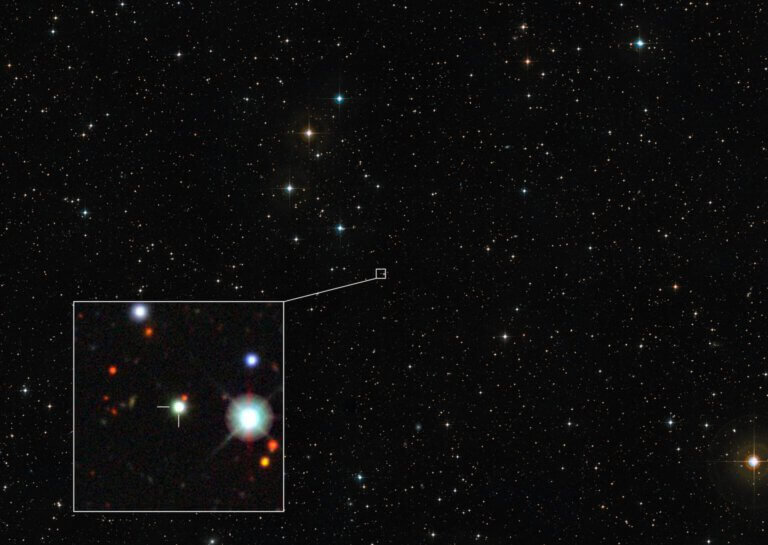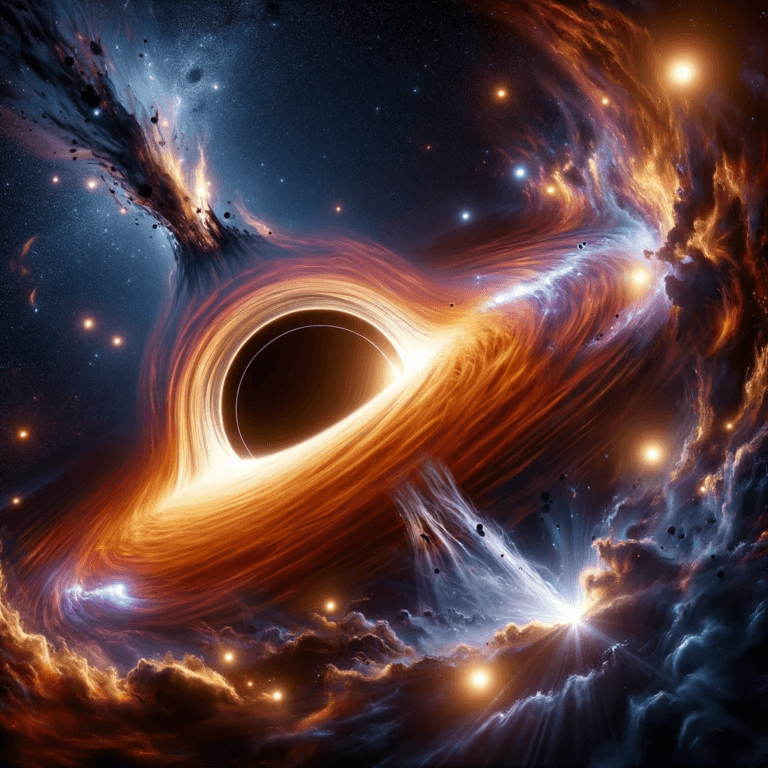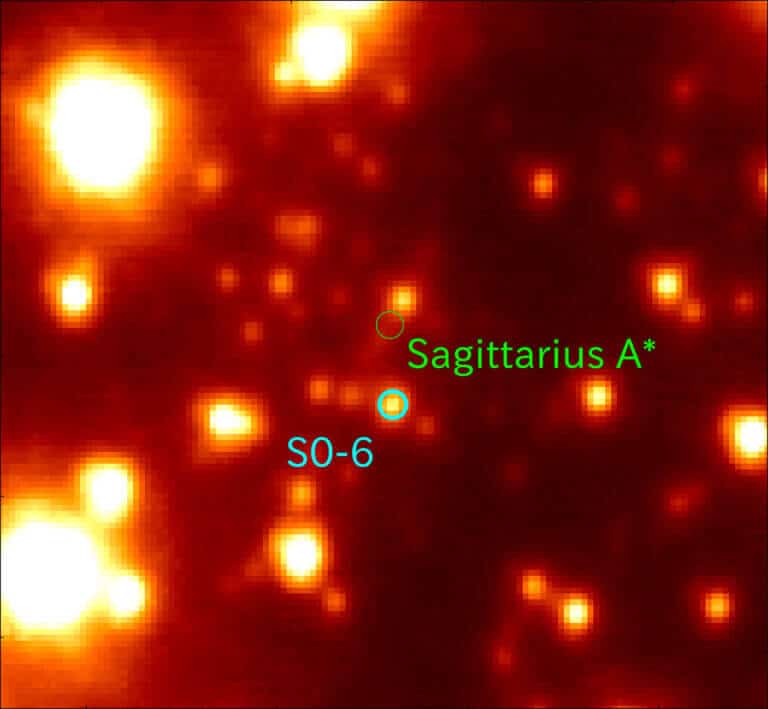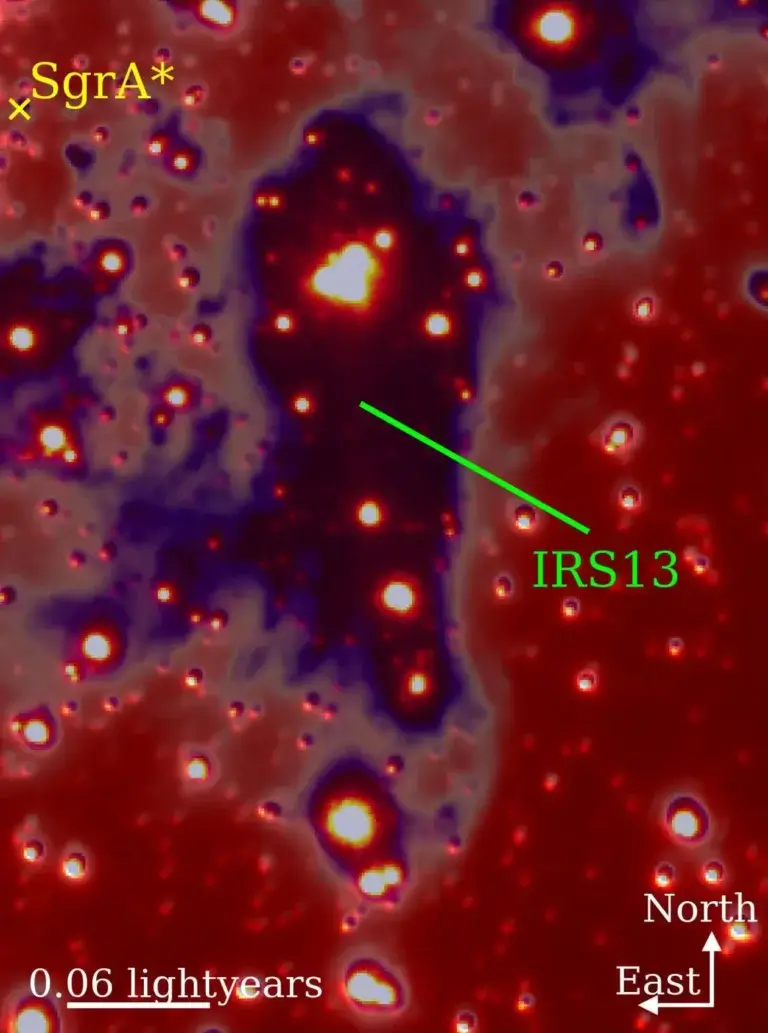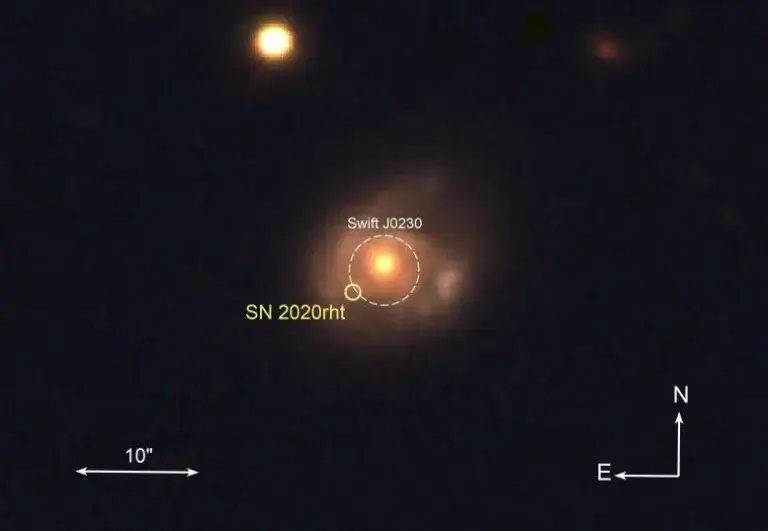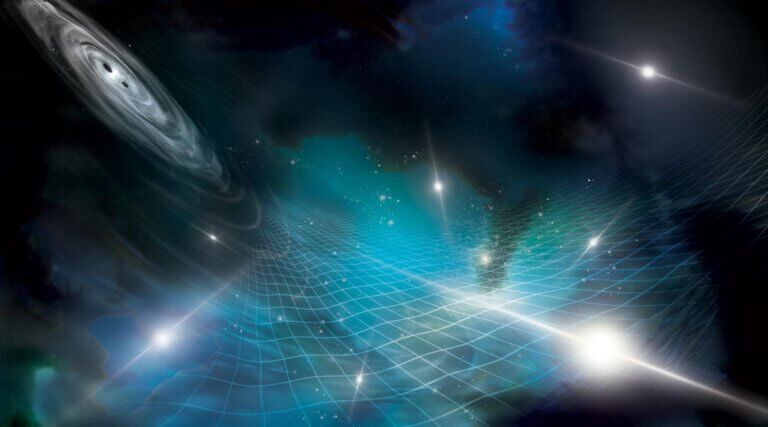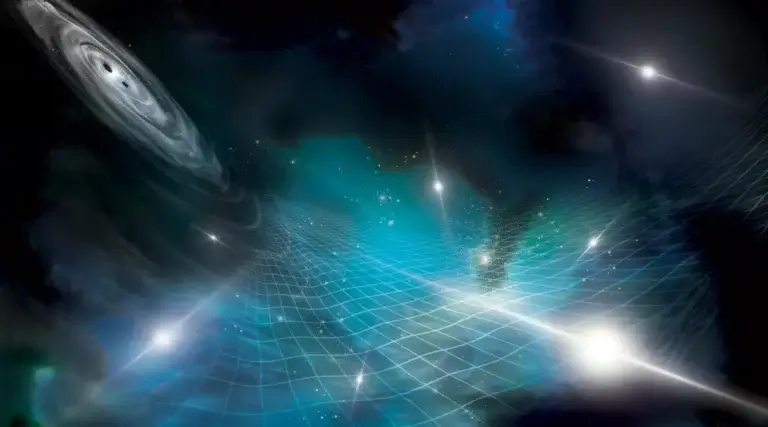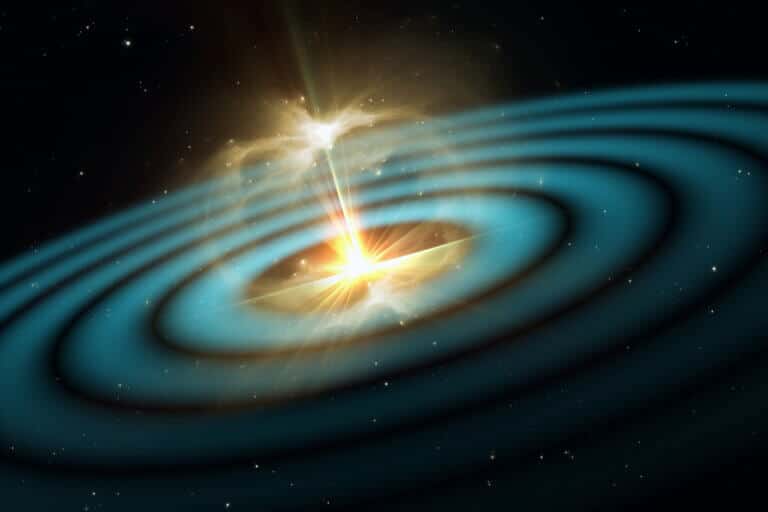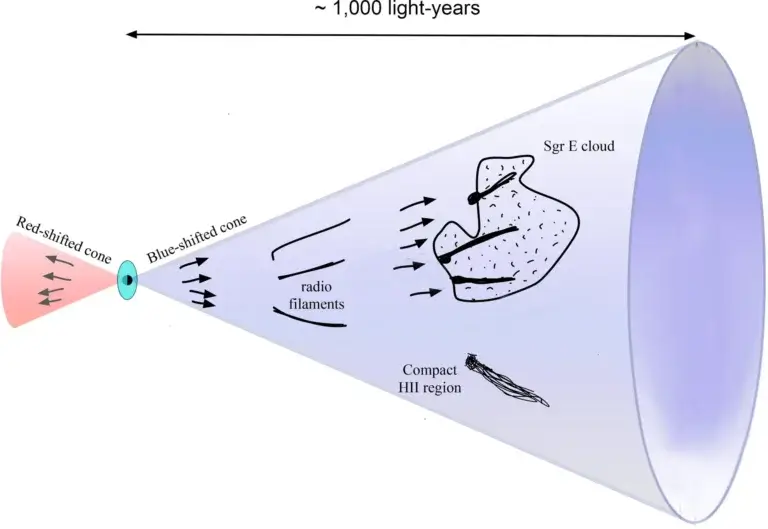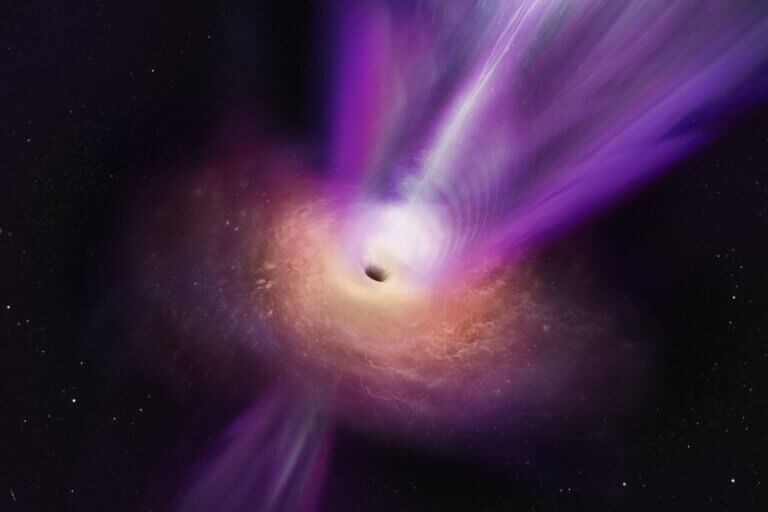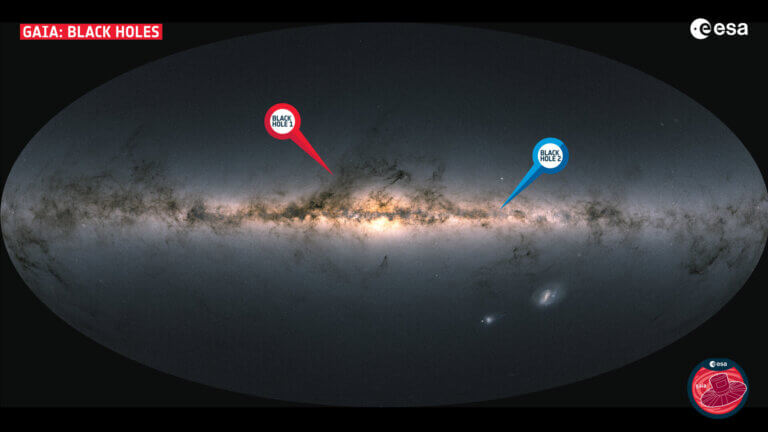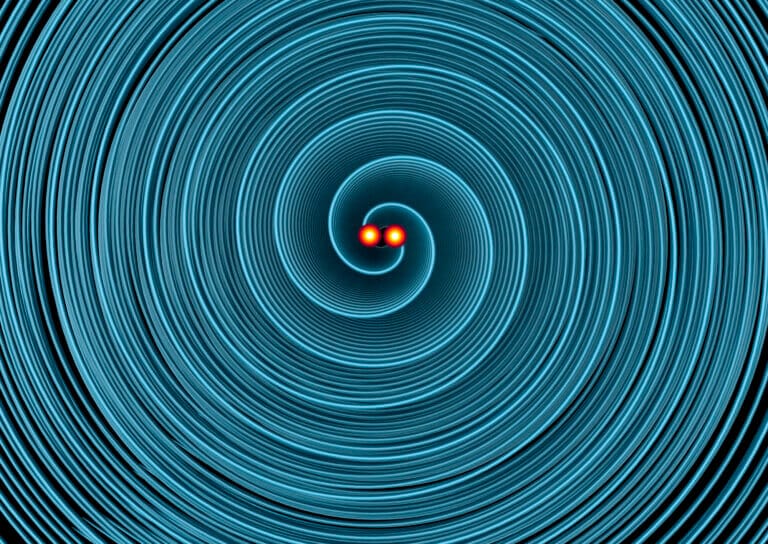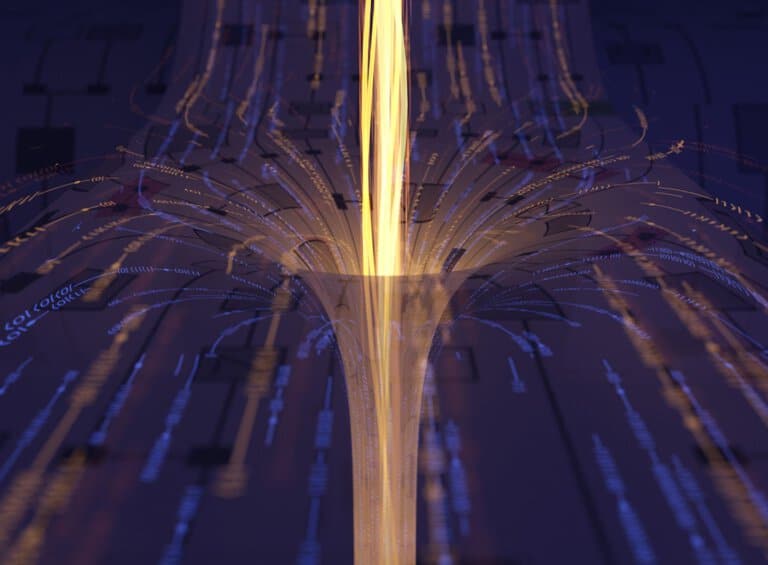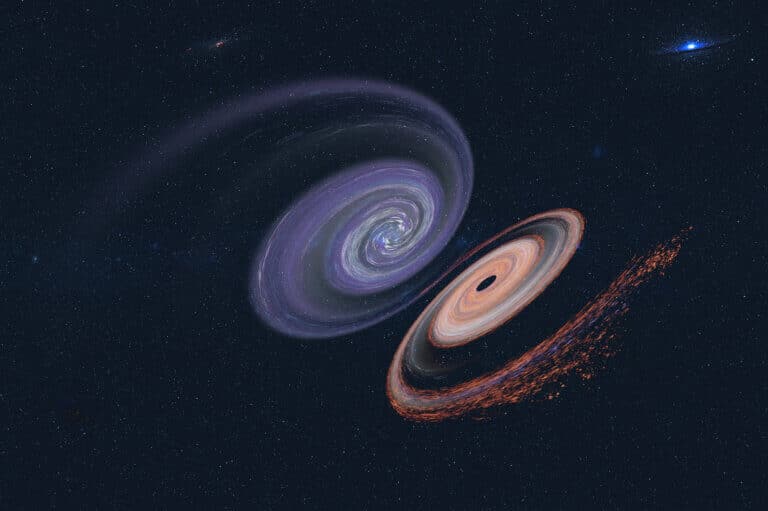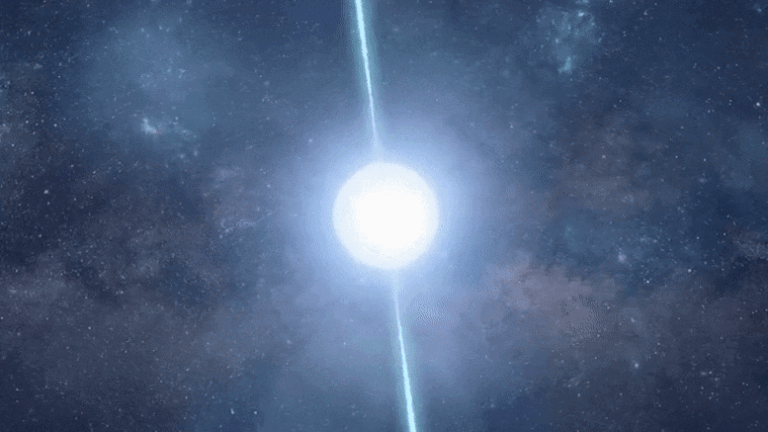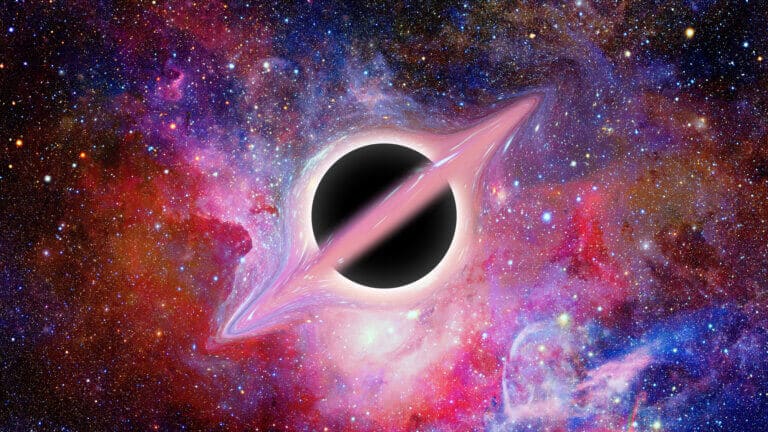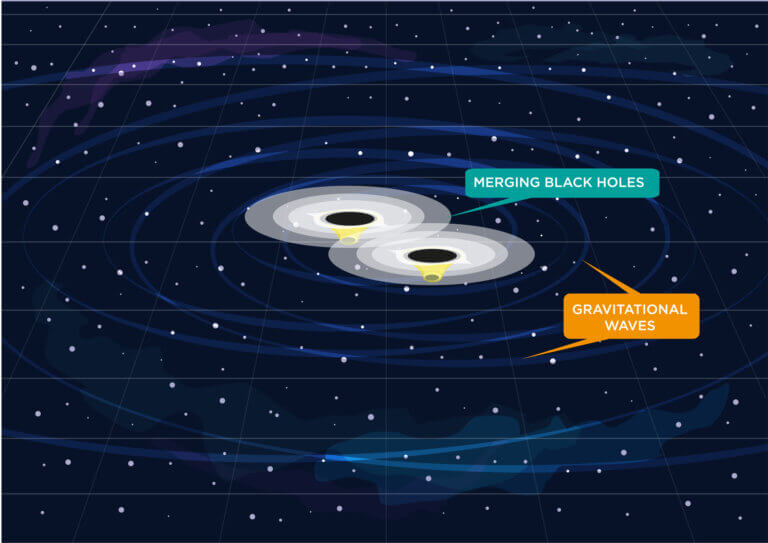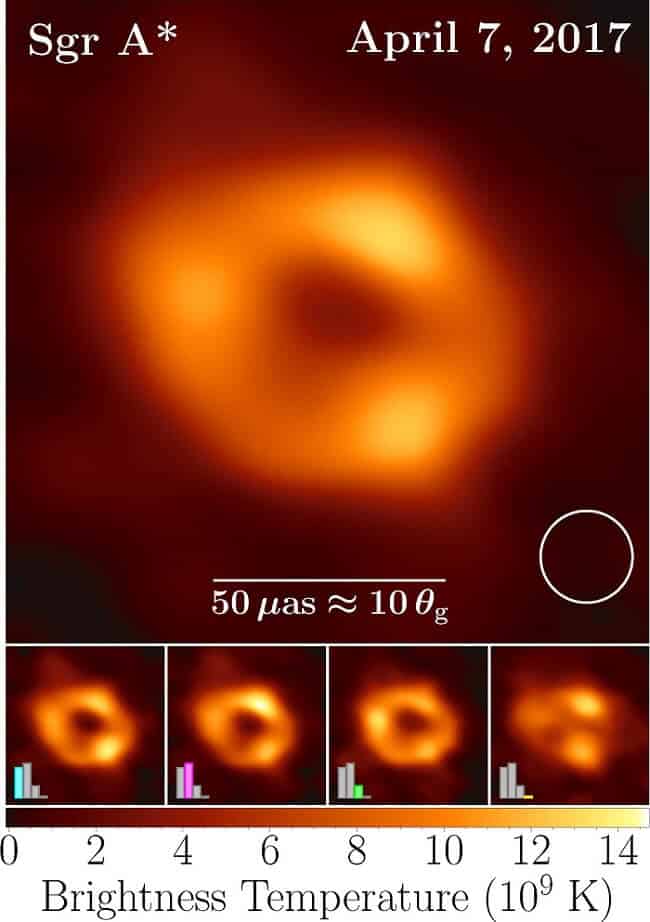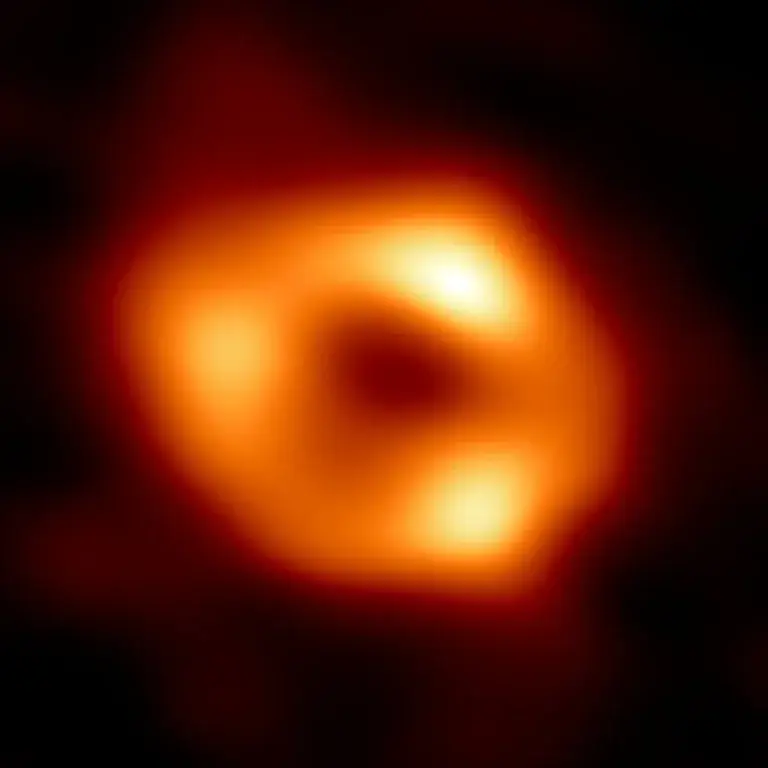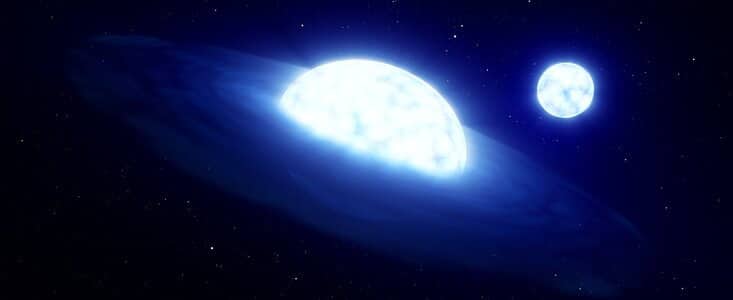Hayadan > Space and astronomy > Astrophysics > Black holes
Black holes
- Avi Blizovsky
- April 18, 2024
- 2 תגובות
A new study reveals details of an unknown class of galaxies called compact compact objects (CSOs) that emit jets moving in opposite directions at speeds close to the speed of light
- Avi Blizovsky
- April 5, 2024
- One response
In a distant galaxy, the supermassive black hole's intermittent gas fluxes led to the discovery of a smaller black hole in its orbit
- Avi Blizovsky
- March 21, 2024
- 10 תגובות
A new study, led by the UK's University of Bath, has found that supermassive black holes need both merging galaxies and cold gas to grow. This discovery, obtained through machine learning, may change our understanding of galaxy evolution
- Avi Blizovsky
- March 3, 2024
- 2 תגובות
Data from the Gemini North Telescope provide a possible explanation for the halting of the merger of a pair of supermassive black holes at the center of a galaxy
- Avi Blizovsky
- February 23, 2024
- No comments
The material being pulled toward this disk-shaped black hole emits so much energy that J0529-4351 is more than 500 trillion times brighter than the Sun
- Avi Blizovsky
- January 28, 2024
- No comments
Intermediate-mass black holes (IMBHs) are a cosmic enigma, their very existence and mechanisms of formation shrouded in mystery
- Avi Blizovsky
- December 10, 2023
- No comments
Research by an international team led by Shogo Nishiyama at Miyagi University shows that some of the stars closely circling the black hole at the center of the Milky Way galaxy may have come from further away than previously thought, completely outside the Milky Way.
- Avi Blizovsky
- October 21, 2023
- One response
Researchers have found that the star cluster IRS13 near the supermassive black hole SagittariusA* at the center of our galaxy is much younger than predicted
- The Hebrew University
- October 8, 2023
- No comments
Professor Zvi Piren, the holder of the Schwartzman Chair at the Rakah Institute of Physics at the Hebrew University and Professor Amir Levinson from Tel Aviv University will take part in a research group of the prestigious Simmons Foundation as part of an international cooperation in mathematics and physical sciences for the study of neutron stars and black holes
- Avi Blizovsky
- September 24, 2023
- 3 תגובות
A Sun-like star located in a galaxy roughly 500 million light-years away is being gradually devoured by a black hole, shedding a mass equal to three Earths on each close pass.
- Avi Blizovsky
- August 15, 2023
- 2 תגובות
"The effect of gravitational waves on pulsars is very weak and difficult to detect, but we built the credibility of the findings over time as we collected more data," said Caterina Cazziano, NANOGrav team member and senior lecturer at Caltech.
- Avi Blizovsky
- July 16, 2023
- One response
NANOGrav Discovers Stronger Gravitational Waves Than Ever, Apparently Created by Pairs of Supermassive Black Holes
- Avi Blizovsky
- June 19, 2023
- 2 תגובות
A significant development in thin layer technology could possibly improve the sensitivity of gravitational wave detectors.
- Avi Blizovsky
- June 8, 2023
- 7 תגובות
An international group of astrophysicists discovered something completely new, hidden in the center of the Milky Way galaxy
- Avi Blizovsky
- April 29, 2023
- 7 תגובות
In a recent paper published in the journal Nature, scientists analyzed new data from the Event Horizon Telescope (EHT) to produce the most detailed image yet of the supermassive black hole at the center of the galaxy M87
- Tel Aviv University
- April 7, 2023
An international team, which includes a group of researchers from Tel Aviv University, has identified the first black hole, Gaia BH1, which is 1500 light years from Earth
- The Voice of Science website - the Israel National Science Foundation
- March 24, 2023
Gravitational wave analysis hints at the way black hole pairs are formed
- Noam Chai
- December 3, 2022
- 8 תגובות
A team of researchers from Harvard University, MIT and Calcutta in collaboration with Google successfully simulated a traversable wormhole with the help of a quantum computer. The experiment performed on Google's quantum processor demonstrated the passage of information in the interlaced system. According to the principle of holography, the physics demonstrated in the experiment is the same as that of particles passing through wormholes. Although it was conducted on only nine qubits, the experiment is of great importance because it illustrates for the first time the possibility of testing quantum gravity with the help of entangled systems.
- Avi Blizovsky
- October 27, 2022
- 11 תגובות
Cardiff University researchers have detected a strange twisting motion in the orbits of two colliding black holes, an exotic phenomenon predicted by Einstein's theory of gravity
- Avi Blizovsky
- July 3, 2022
- No comments
The assessment: This is a collision of matter and antimatter in the vicinity of black holes or collapsed neutron stars known as magnetars
- Avi Blizovsky
- June 18, 2022
- 9 תגובות
Unlike the supermassive black holes at the centers of galaxies, black holes with the masses of individual stars have no matter attracted to them or other nearby objects surrounding it, so they are difficult to detect
- Avi Blizovsky
- June 15, 2022
- One response
A team of researchers from Australia recently made a new prediction about the strength of this gravitational wave signal. The new estimate is based on data from the MassiveBlack-II imager, which simulates a massive region of space that resembles a slice of our universe
- Avi Blizovsky
- May 14, 2022
- One response
Says Dr. Shahar Hadar, a theoretical astrophysicist from the University of Haifa and Oranim College who also works in the development of the next generation of the Event Horizon Telescope. He also explains why it took five years to produce the photo published this week and what is planned to be done in order to improve the resolution
- Avi Blizovsky
- May 12, 2022
- 2 תגובות
First image of the black hole at the center of our galaxy Sagittarius A* (Sagittarius Ai Kochav) which until now has been studied for its effect on other stars, this time we can see its event horizon. Photographed by the Ofek Al-Havain partnership which connected eight radio observatories into one radio telescope the size of the Earth
- Avi Blizovsky
- March 6, 2022
- 2 תגובות
In 2020, a team led by astronomers from the European Southern Observatory (ESO) reported the closest black hole to Earth, which is only 1000 light years away. But other researchers have disputed their results. After further observations from the ground and from space, both the original researchers and their critics came to the conclusion that there is no black hole

